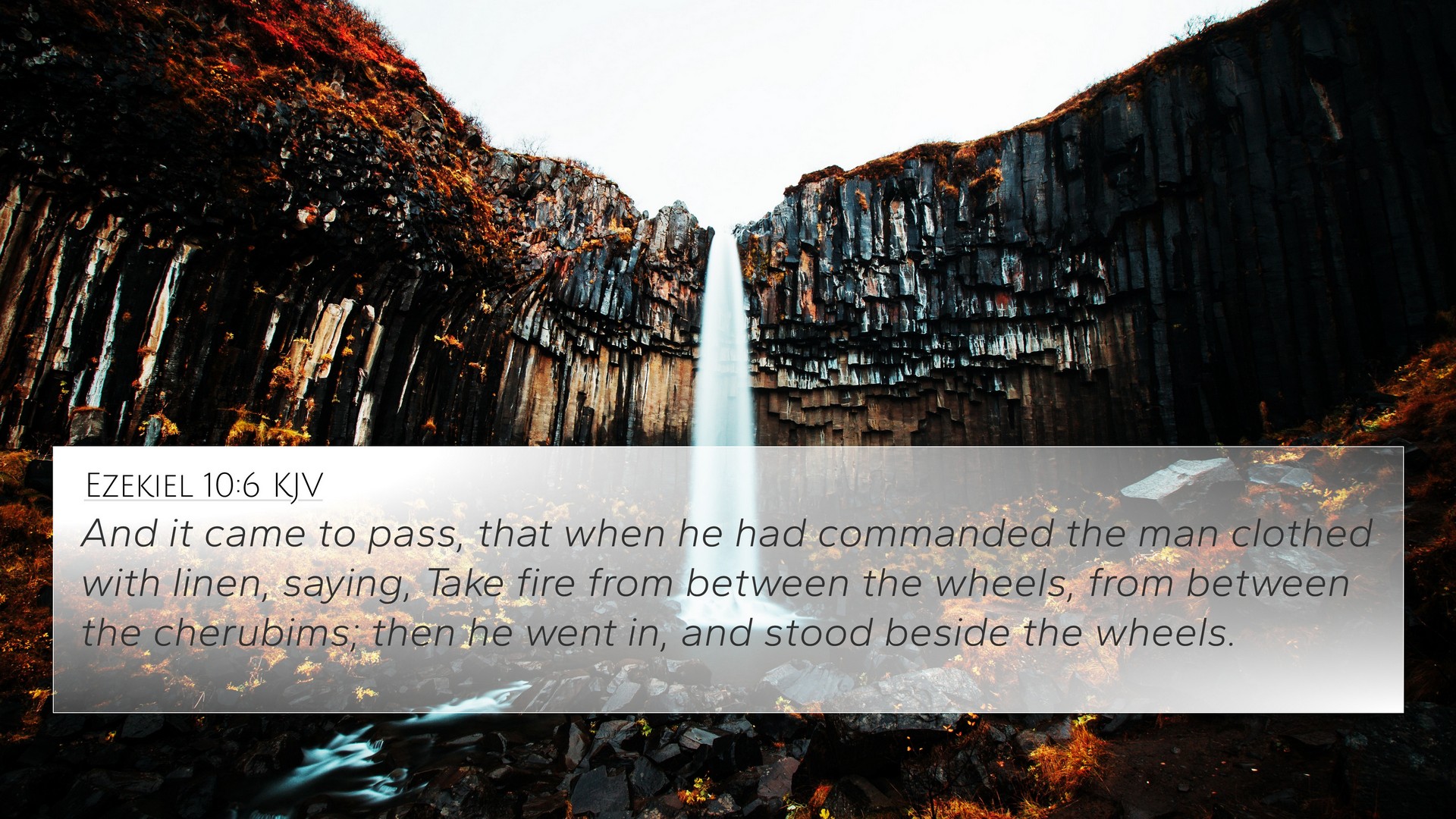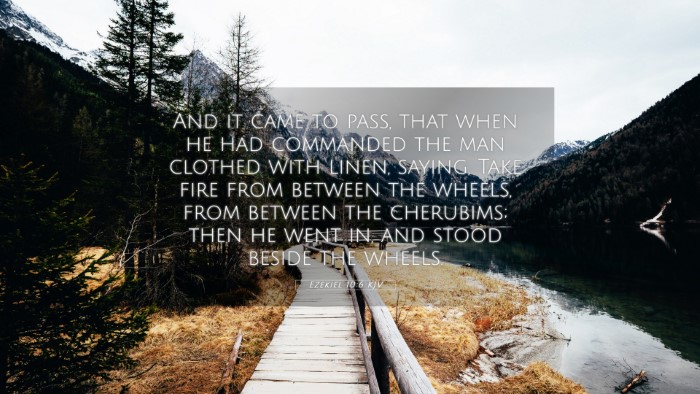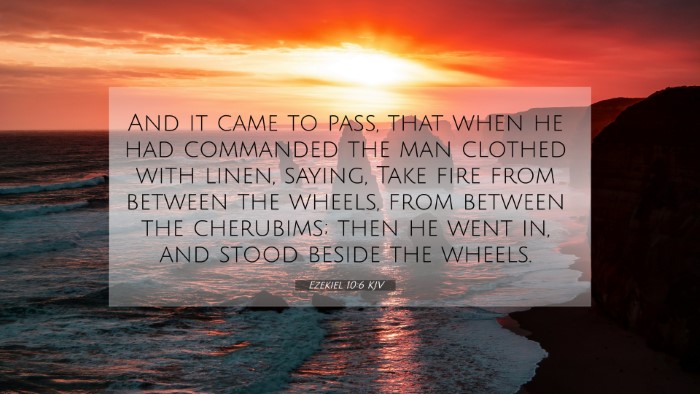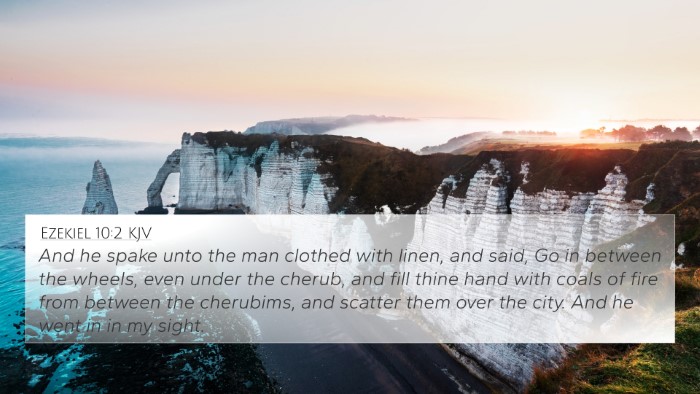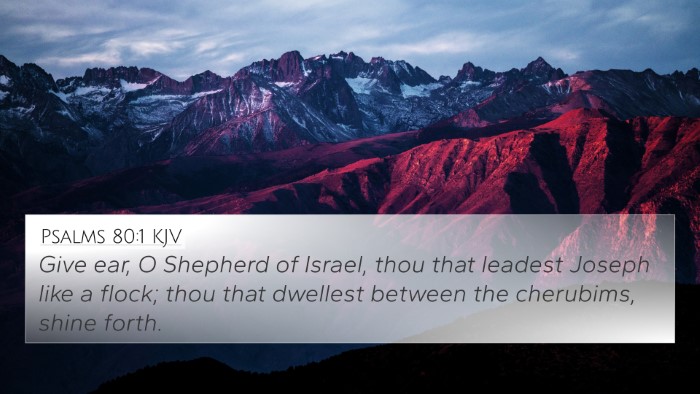Understanding Ezekiel 10:6
Ezekiel 10:6 is a pivotal verse in the prophetic literature of the Old Testament, providing insights into the divine judgment and the significance of God's presence among His people. The verse states:
"And it came to pass, that when he had commanded the man clothed in linen, saying, Take fire from between the wheels, from between the cherubims; he went in, and stood beside the wheels."
Summary of the Verse's Context
In this chapter, the vision of God's glory departing from the temple is central. The discrepancy between God's holiness and the sinfulness of Israel underscores this prophetic message. Ezekiel’s visions emphasize judgment while also maintaining a promise of restoration.
Commentary Insights
-
Matthew Henry's Commentary:
Henry highlights the gravity of God’s holiness and the seriousness of divine judgment. The command given to the man in linen signifies God's instructions for the removal of impurities and the preparation for judgment through the act of taking fire, which epitomizes purification.
-
Albert Barnes' Commentary:
Barnes notes that taking fire from between the wheels and cherubims signifies the execution of divine orders, showcasing the careful and solemn nature of God's commands amidst the heavenly deliberations.
-
Adam Clarke's Commentary:
Clarke points out the unique symbolism of the cherubim as guardians of God’s glory, and fire representing both judgment and purification. The action reflects the impending judgment upon Israel and God's meticulous approach to maintaining His holiness.
Thematic Connections
Ezekiel 10:6 illuminates several themes central to the Old Testament and the broader biblical narrative, including:
- Divine Instruction: God's commands are followed with precision, reflecting His sovereignty.
- Judgment and Purification: Fire serves as a motif of judgment and the call for purification within the community of believers.
- The Glory of God: The presence of the cherubim signifies the protective and glorious nature of God among His people.
Bible Verse Cross-References
This verse can be understood more profoundly through several cross-referenced texts:
- Isaiah 6:6-7: The coal from the altar purifies Isaiah’s lips, mirroring the theme of divine fire and purification.
- Revelation 8:5: The angel took fire from the altar, linking the act of taking fire in Ezekiel to the heavenly realms.
- 2 Samuel 6:2: The significance of cherubim and God’s presence as David brings the Ark back to Jerusalem.
- Ezekiel 1:5-10: The vivid descriptions of the cherubic beings relate to their role in God's judgment and glory.
- Exodus 29:37: Consecrating the altar with fire echoes the importance of divine purification.
- Hebrews 9:5: References the mercy seat and cherubim, depicting the continuity of Old Testament symbolism in the New Testament.
- Leviticus 10:1-2: The concept of strange fire symbolizes the danger of disobedience amid God’s commands.
Connections Between Bible Verses
The connections found in Ezekiel 10:6 showcase intricate thematic links, permitting a deeper understanding of how scripture communicates intricate concepts of divine judgment and holiness across both testaments. Through comparative Bible verse analysis, one sees how similar messages occur throughout the biblical narrative, emphasizing God's continual call for purity among His followers.
How to Use Bible Cross-References
Engaging with scripture through tools such as a Bible concordance aids in exploring inter-Biblical dialogue and enhances the understanding of thematic Bible verse connections. By linking Bible scriptures, one can uncover new dimensions to Biblical themes and receive greater insights on familiar passages.
Conclusion
In summary, Ezekiel 10:6 serves as a crucial reminder of God’s holiness and the call for purification amid His judgments. Engaging in cross-referencing Biblical texts reveals the depth of meaning within scripture and fosters richer spiritual growth and understanding. The ongoing dialogue within the scriptures not only illustrates the profound connections these texts share but also aids in the spiritual journey of believers worldwide.
